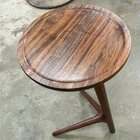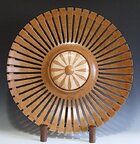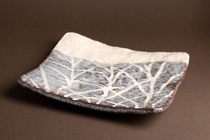I want to glue up two 6/4 oak boards along the long grain to get a wider board for a platter. Then turn the platter keeping it square and dishing out the interior, finished thickness I think about 1/4-3/8"
Question is should I have a straight 90* square glue line or should I rip the boards at some sort of a bevel angle to give a little more glue surface area.
Question is should I have a straight 90* square glue line or should I rip the boards at some sort of a bevel angle to give a little more glue surface area.



